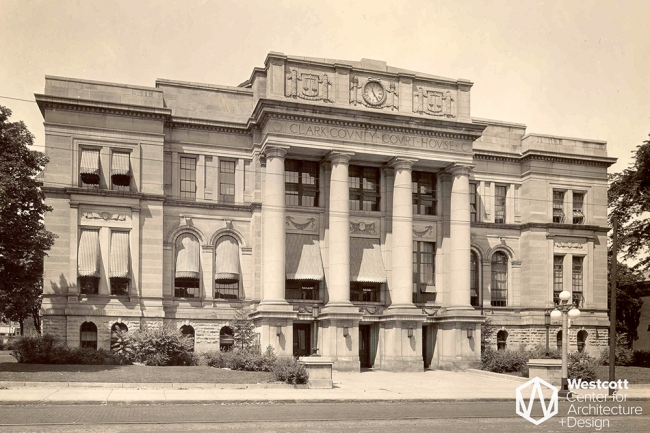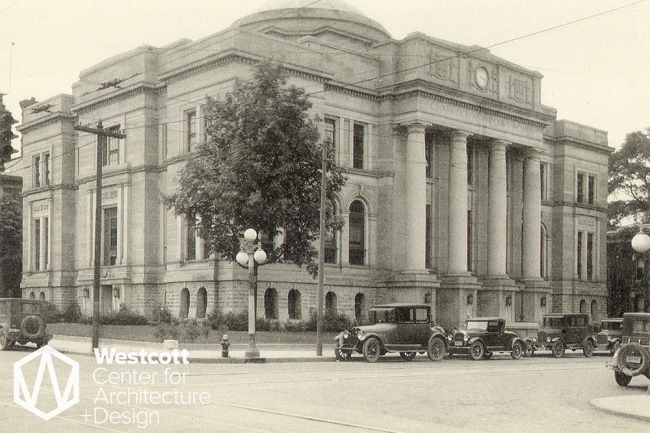After a fire destroyed the second Clark County Court House in February 1918, the city wanted to rebuild on its existing foundation. William K Shilling, a local Springfield architect won a competition for the current design. The new building was dedicated on October 1, 1924 and cost nearly a quarter of a million dollars. This was one of Shilling’s first public designs for the city, preceding the stunning post office, located across the street.
The Court House is built on the same basic structure as the 1878 Mid-Victorian building, but Shilling transformed certain elements, causing a shift in style. The arched windows became square, the clock tower is now domed, and the front stairs were removed and replaced with four large columns. Shilling’s design, now Neo-Classicisal, borrows certain elements from classical Greek and Roman architecture but liberates them from their strict form. Shilling’s design combines classical motifs, including columns, a two story portico, ashlar and rocked-faced brick, and dome, with more modern architecture elements, such as a flat, stepped roof, simple décor, and rectangular shape of the windows.
Appropriate for a court house, Shilling’s design implies strength and stability evident in the massive architectural and decorative elements. The building includes several different allegorical motifs. The sword and balance, located on the rectangular pediment, represents judgment and justice, while the striped shield, located above the main entrance indicates protection, defense and peace. Above the portico, Shilling completes the iconography for his masterpiece by placing several fasces, the traditional Roman symbol for authority and power, on the main facade.
The design of the Clark County Court House blends with the other municipal designs for Springfield buildings from the mid 1900s, but stands apart by combining new and old architecture and motifs that embody a sense of strength and supremacy.
In 1985, the deteriorating structure of the court house was renovated at the cost of $50,000, so that the building could continue to function as an important and dynamic municipal building in the city.


